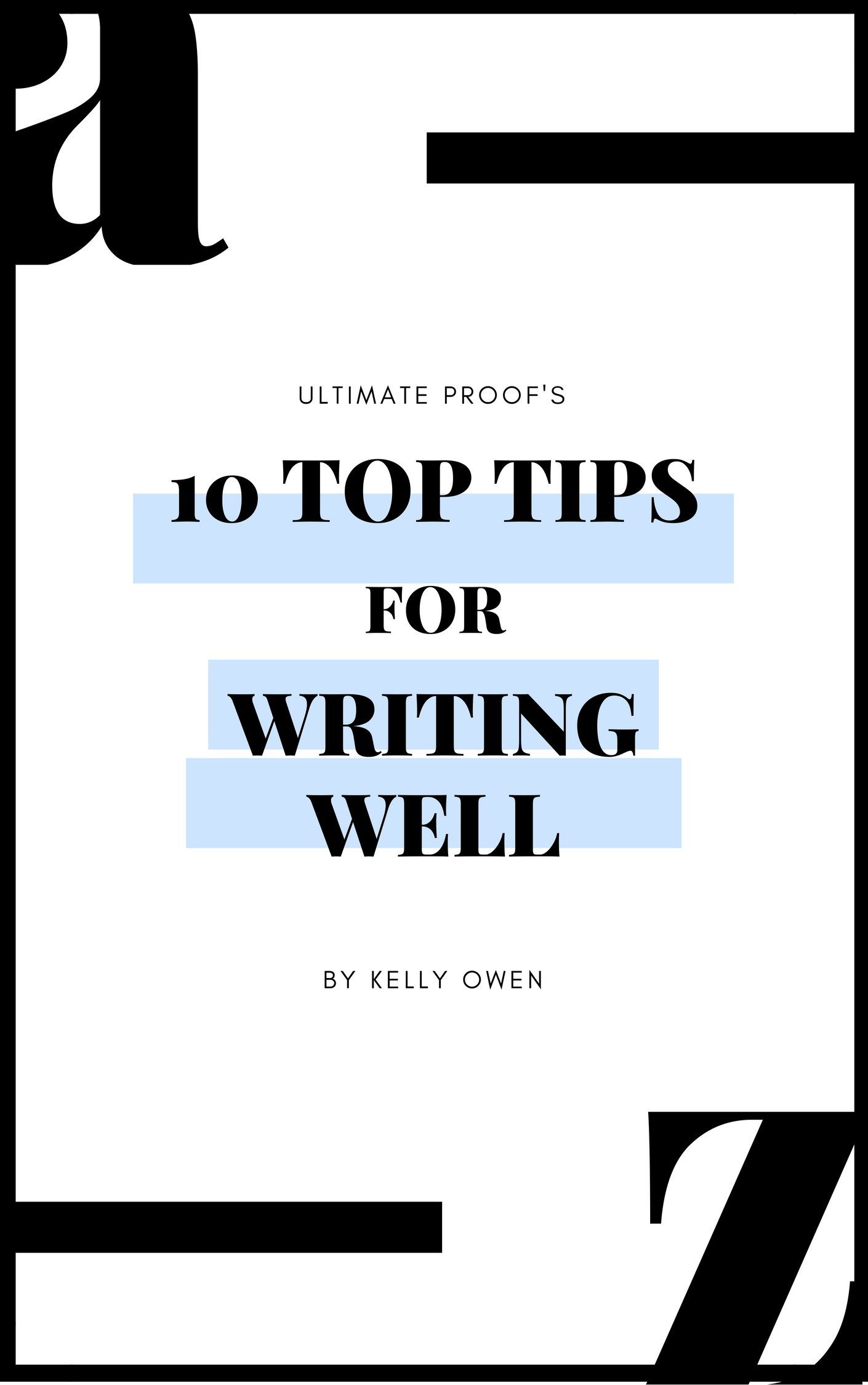10 Top Tips for Writing Well
Follow these basic rules to liven up your writing.
Tip 1 - Know your reader
Keep your reader in mind as you write.
Ask yourself why you are writing, what you are trying to say and to whom you are saying it.
Do you want to inform, engage or influence?
Accordingly, decide whether your content should be factual, inspiring or persuasive.
Be clear about the action you want your reader to take. Then you’ll tell them what they need toknow, not simply what you’ve found out or want to say.
Tip 2 - Know what you want to say
Put important messages at the start.
Test them out aloud before you commit them to paper: if you can’t make sense of them, how will your reader?
Organise your thinking at the planning, not the writing, stage. Order your material to be logical and transparent to your reader.
Tip 3 - Use meaningful subheadings
Use subheadings to show readers at a glance how your themes develop.
So, instead of writing ‘Section 4’, describe the content
of that section, e.g., ‘Our safeguarding policy’.
Tip 4 - Be direct
Write to
people, not about them.
Use ‘you’ and ‘we’ or ‘I’ to make your writing more confident, more transparent and more personal.
Write about what concerns your readers rather than your business processes.
Before
Members of the public are asked to send our head office examples of community activities they would like to see in their local area.
After
Please send us your ideas for new community activities in your area.
Tip 5 - KISS! (Keep it short and simple)
Use plain English (language you use when talking).
Only use jargon when you are certain your readers will understand it, and never for external or non-expert readers.
Use abbreviations and acronyms sparingly. Explain them at the first mention.
Cut out redundant words ( very
unique..., estimated at about...
, past
experience..., etc).
Use verbs rather than nouns: it’s the verbs that make language dynamic.
Avoid too many heavy nouns ending in -tion or -sion, e.g. recommendation.
This nominalisation (creating a noun from the verb) makes writing clunky and boring to read.
Before
The aim of this document is to provide an outline of systemic operations to facilitate the implementation of
methodology that will assist the team in the avoidance of inconsistency in the wording used in our publications.
After
This document outlines how we can be consistent with the wording we use in our publications.
Tip 6 - Use the active voice
Using the active voice more is the single biggest thing that will give your writing a bit of life.
It also makes writing more confident and more authoritative,
as it makes clear who is responsible for doing what.
The active voice always puts the ‘doer’ first.
Before
Reference was made to the document (by Jane).
After
Jane referred to the document.
Tip 7 - Keep paragraphs short
Stick to one main point per paragraph.
If you can’t sum up that point in a few words, you have probably tried to cram in too much.
Tip 8 - One sentence, one idea
Keep your sentences short. Aim for an average of 17 words per sentence, although don't let the word count stifle your flow.
Vary your rhythm: try inserting the odd two- or three-word sentence for impact. It’s easy. And it will help keep your reader's attention.
Tip 9 - Edit, twice!
Be rigorous in your editing.
Are you using the best word for the job? What do you mean? Is there a simpler way to say it?
When you think you’ve finished, try cutting by a third.
Tip 10 - Proofread
Proofreading isn’t an optional extra: make time for it.
Print the document out and come back to it when you’re fresh – ideally the next day.
Try to proofread away from your desk: this will help you read it as a reader, not as the writer.
Use a ruler to guide you and a pencil to point to each word individually.
This will stop your brain reading what it expects to see rather than what’s actually there.
If possible, call in some professional help...
Employing the services of a professional editor or proofreader is a cost-effective way to ensure your writing works well.
As a specialist business editing and proofreading company, Ultimate Proof Ltd won't baffle you with jargon and confusing mark-up symbols.
We understand that businesses need to work with people who can edit and scrutinise their text efficiently and accurately,
working effortlessly with designers and communications professionals.
We also create simple business copy style guides that you can share with your staff and suppliers, to ensure all your writing works well.
We hope these tips have helped you, you can download this information as a free PDF
to print out and refer to or share with colleagues.



